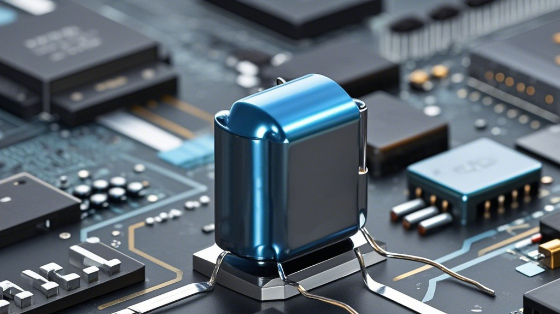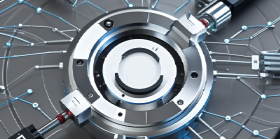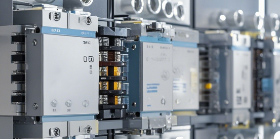The Pivotal Role of Capacitors in Modern Electronics
2024/10/25 11:39:56
In the realm of modern electronics, capacitors stand as essential components that play a crucial role in powering and enhancing the functionality of a wide range of devices. From the smallest portable gadgets to large-scale industrial machinery, capacitors are ubiquitous and their significance cannot be overstated.
A capacitor is an electrical device that stores electrical energy in an electric field. It consists of two conductive plates separated by an insulating material called a dielectric. When a voltage is applied across the plates, an electric field is created between them, causing electrons to accumulate on one plate and leave a deficiency of electrons on the other. This separation of charges stores electrical energy, which can be released when needed.
One of the primary functions of capacitors is to filter and smooth electrical signals. In power supplies, capacitors are used to filter out unwanted fluctuations and noise in the incoming power, providing a stable and clean voltage to the connected devices. By storing and releasing electrical energy quickly, capacitors help to smooth out the voltage waveform and reduce ripple, ensuring that sensitive electronic components receive a consistent power supply.
Capacitors are also widely used in timing circuits. In digital electronics, for example, capacitors are combined with resistors to create timing delays or oscillators. The charging and discharging of a capacitor through a resistor can be used to generate a specific time interval or a repetitive waveform, which is essential for the operation of microcontrollers, clocks, and other timing-sensitive devices.

In addition to filtering and timing applications, capacitors play a vital role in energy storage and power backup systems. In some applications, capacitors can be charged quickly and then discharged to provide a burst of power when needed. This is particularly useful in applications such as flash photography, where a large amount of energy is required for a short duration. In power backup systems, capacitors can be used to provide temporary power during power outages or fluctuations, allowing critical devices to continue operating until the main power source is restored.
The performance and characteristics of capacitors depend on several factors, including the type of dielectric material used, the capacitance value, and the voltage rating. Different dielectric materials offer different advantages and are suitable for different applications. For example, ceramic capacitors are known for their small size, high capacitance values, and good stability, making them ideal for use in portable electronics. Electrolytic capacitors, on the other hand, can store large amounts of energy and are commonly used in power supplies and high-power applications.
Capacitance value is another important parameter that determines the ability of a capacitor to store electrical energy. Capacitance is measured in farads (F), and capacitors are available in a wide range of capacitance values, from picofarads (pF) to several thousand microfarads (µF) or even larger. The choice of capacitance value depends on the specific requirements of the application, such as the amount of energy storage needed or the filtering characteristics required.
Voltage rating is also a critical consideration when selecting a capacitor. The voltage rating indicates the maximum voltage that a capacitor can safely handle without breakdown. Choosing a capacitor with a voltage rating higher than the expected operating voltage is essential to ensure reliable operation and prevent damage to the capacitor and the connected devices.
As technology continues to advance, the demand for more advanced and specialized capacitors is on the rise. In the field of renewable energy, for example, capacitors are being used in energy storage systems for solar panels and wind turbines. These capacitors need to be able to handle high voltages and currents, as well as operate in harsh environmental conditions. In the automotive industry, capacitors are being used in electric vehicles to provide power for acceleration and regenerative braking, as well as to smooth out the voltage in the vehicle's electrical system.
In addition to traditional capacitors, new types of capacitors are being developed that offer unique properties and capabilities. For example, supercapacitors, also known as ultracapacitors, have extremely high capacitance values and can store and release large amounts of energy quickly. Supercapacitors are being explored for use in applications such as hybrid and electric vehicles, backup power systems, and renewable energy storage.
Another emerging technology is the development of flexible capacitors. These capacitors can be bent, folded, or stretched, making them suitable for use in wearable electronics and flexible displays. Flexible capacitors offer the potential to revolutionize the design of portable and wearable devices, allowing for more conformal and comfortable designs.
In conclusion, capacitors are essential components of modern electronics, playing a crucial role in filtering, timing, energy storage, and power backup applications. As technology continues to evolve, the demand for more advanced and specialized capacitors will continue to grow. Whether it's in the development of renewable energy systems, the advancement of the automotive industry, or the creation of innovative wearable electronics, capacitors will remain at the forefront of technological innovation, powering the future of electronics.
Related Information

- 2025.05.12 Intel terminates Deep Link program



